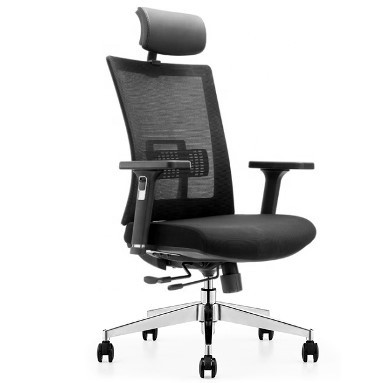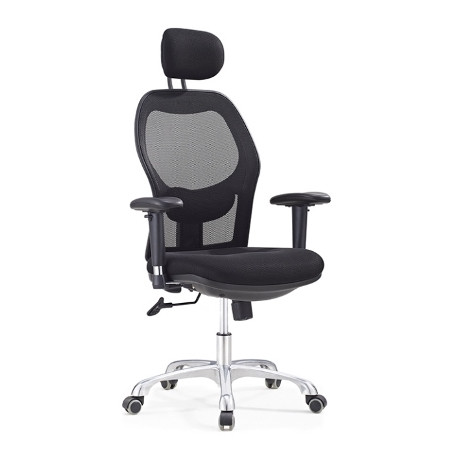
The Pros and Cons of Armless Office Chairs in Minimalist Setups
Introduction
Minimalist office designs prioritize simplicity, clean lines, and functionality. In this setting, bulky or over-accessorized furniture can feel out of place. Armless office chairs have become a popular choice for their clean silhouette and compact footprint. But beyond their sleek look, do they offer real ergonomic value? This article explores both the advantages and trade-offs of armless office chairs to help you decide if they belong in your minimalist workspace.
1. Streamlined Design Matches Minimalist Aesthetics
Armless chairs naturally align with minimalist principles—less is more. Without bulky armrests, they contribute to a clean, unobstructed visual flow in the office. Their pared-down look works well in creative studios, home offices, and modern coworking spaces where the goal is to eliminate visual clutter.
2. Improved Mobility and Movement
Without armrests, users enjoy a greater range of motion. Whether you're leaning into a task, swiveling to grab something nearby, or tucking in close to the desk, armless chairs don't get in the way. This makes them ideal for multitaskers or roles that require frequent reaching and repositioning.
3. Space-Saving for Compact Workstations
For small workspaces or shared environments, armless chairs make a lot of sense. They fit neatly under desks and can be stored away easily when not in use. Their smaller profile also makes it easier to fit more seating into a collaborative zone without feeling cramped.
4. Encourages Active Sitting
Some users report that armless chairs promote more core engagement and upright posture. Without the temptation to lean or rest too heavily on arm supports, users may become more mindful of their sitting position. This can be beneficial in short bursts, especially during focused work sessions.
5. Budget-Friendly Option
In many cases, armless office chairs cost less than their armrest-equipped counterparts. This can be an attractive feature for startups or teams setting up multiple minimalist workstations on a budget, without compromising too much on quality or ergonomics.
6. Not Ideal for Long Hours of Use
While armless chairs promote movement, they may not be the best fit for long-duration use. Lack of arm support can lead to shoulder fatigue, particularly for users who type a lot or stay seated for extended periods. Ergonomic comfort may be sacrificed for aesthetics if not chosen carefully.
7. Limited Support for Repetitive Tasks
Jobs that involve consistent mouse work, editing, or design can strain the arms and wrists without proper arm support. Armless chairs may leave users without the needed rest points to maintain healthy posture during repetitive tasks, leading to discomfort over time.
8. Not Ideal for All Body Types
Without adjustable arms, some users may find it harder to achieve a properly aligned and supportive seating posture. Tall users may slouch more, and shorter users may miss the added lift armrests can provide. Comfort varies greatly depending on the user’s build and work habits.
9. Aesthetic Trade-Offs in Certain Spaces
While armless chairs are perfect for minimalist environments, they may appear too casual in formal or executive settings. They can lack the visual impact or presence needed for roles that require a strong professional image.
10. Fewer Adjustment Options
Many ergonomic chairs come with fully adjustable armrests to support personalized comfort. Removing the arms altogether limits adjustability, which can be a drawback for users who need customizable support for their tasks and body shape.
Recommended Products

-
Sujaan Mesh High Back Ergonomic Chair
Designed with minimalist function in mind, this mesh chair provides breathable support and a sleek, armless profile—perfect for compact desks and open studio layouts.
-
Mujaan Mesh High Back Ergonomic Chair
This high-back chair combines a refined aesthetic with essential ergonomic features, offering a streamlined seating experience that fits seamlessly into clean, modern workspaces.
Final Thoughts
Armless office chairs can be an excellent fit for minimalist setups, offering a light, agile, and visually clean solution for modern workspaces. However, they’re not one-size-fits-all. While they provide flexibility and cost savings, they may fall short in comfort for long-term users or those needing extra support. Ultimately, the right choice depends on your workspace needs, work habits, and ergonomic preferences.
FAQ
Are armless office chairs good for posture?
They can encourage better posture by requiring active engagement, but they may not provide enough support for long sessions without breaks.Do armless chairs take up less space?
Yes, armless chairs are more compact and are easier to slide under desks or tuck away when not in use.Can I add armrests later to an armless chair?
Some models offer optional armrest attachments, but not all. It's best to check the product specifications before purchasing.Are armless chairs cheaper than standard office chairs?
Generally, yes. Armless models tend to be more budget-friendly due to fewer materials and simpler construction.


